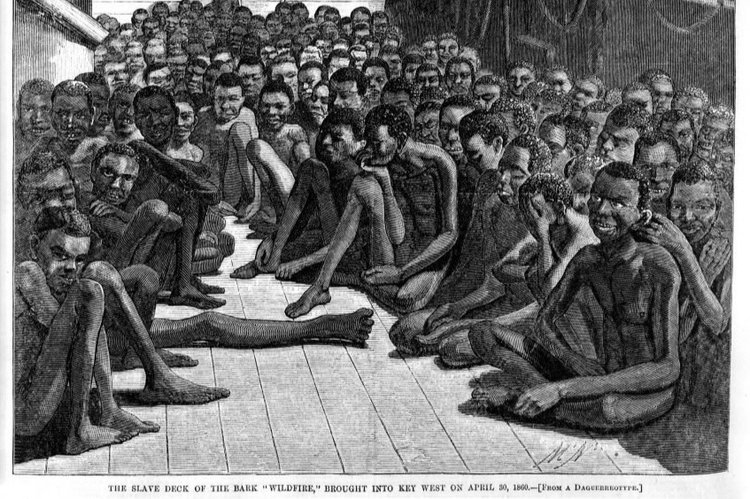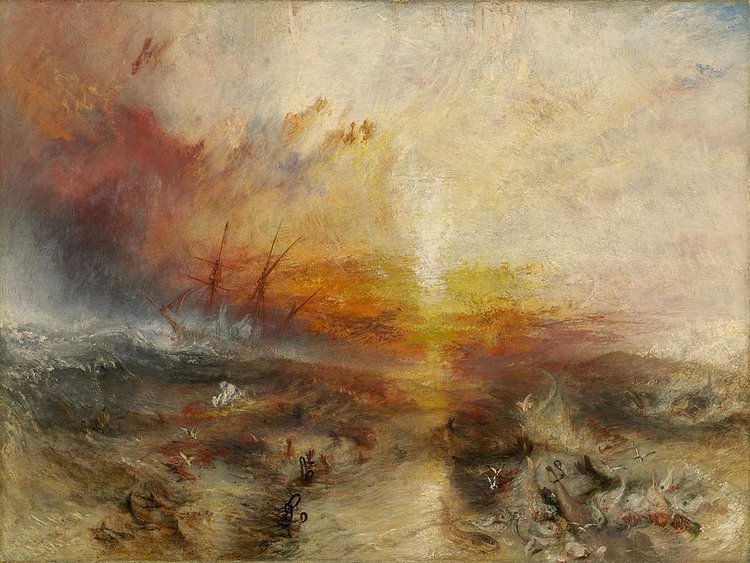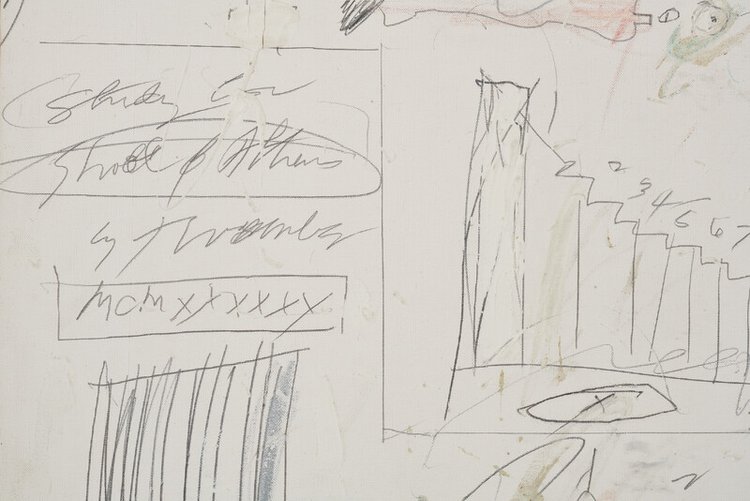|
|
From: Jonathan Simon <jonathan.simon@umontreal.ca>Subject: Fw: Giuseppe Longo, Conférence spéciale, 25 septembre, 10h-12h, Locale 422, 2910 Éd. Mont., « Espaces d'imagination dans la relation triangulaire : machine/homme/écosystème"
Date: September 18, 2023 at 4:37:51 PM EDT
Chers collègues,J'ai le plaisir de vous annoncer une conférence spéciale qui sera donnée lundi prochain, 25 septembre, de 10 h à 12 h, par Giuseppe Longo, en visite à Montréal du Centre Cavaillès, CNRS - ENS, Paris.
Veuillez transmettre cette invitation à vos collègues ou étudiants susceptibles d'être intéressés.
Où:
2910 boul. Édouard Montpetit,
locale 422
Quand:
10h - 12h, 25 septembre
Qui:
Giuseppe Longo
Centre Cavaillès, CNRS - ENS, Paris ww.di.ens.fr/users/longo
Quoi:
Espaces d'imagination dans la relation triangulaire : machine/homme/écosystème.Abstrait:
En 1936, Alan Turing imaginait un «calculateur humain... agissant sur un cahier d'enfant», saLogical Computing Machine : lire/écrire 0/1, se déplacer à gauche/à droite. Conjointement au Lambda-calcul de Church (1932), ces «systèmes de réécriture de termes» constituent encore aujourd'hui le fondement logique de l'informatique et, depuis trop longtemps, un paradigme pour la cognition humaine et l'IA. Turing les présentait comme une «imitation» possible d'un cerveau humain. Le «tournant connexionniste» s'appuie au contraire sur un «modèle» du cerveau, depuis Hebb et Rosenblatt (dans les années 1950) et a ouvert la voie au Deep Learning contemporain. Dans les deux cas, une machine à entrées-sorties est censée simuler un cerveau animal, sans espace tridimensionnel (ou avec juste une imitation de celui-ci par une cascade de couches bidimensionnelles), ni la matérialité biologique du cerveau dans son contexte (un crâne animal, dans un corps, dans un écosystème). Certains résultats limitatifs (mathématiques) du Deep Learning seront évoqués ainsi que les différences entre imprévisibilité, dynamique et créativité, comme instance de «production d'anti-entropie», notion proposée en 2009. Dans les processus mentaux, la production d'anti-entropie peut être comprise comme «l'invention de configurations de sens».
References :
G. Longo, Le cauchemar de Prométhée. Les sciences et leurs limites. Préface de Jean Lassègue, postface d’Alain Supiot. PUF, Paris, 2023. - Couverture-Table-introLeCauchemarPromethee.pdf - E. Klein : Présentation sur France Culture - 4 minutes
G. Longo, Information at the Threshold of Interpretation, Science as Human Construction of Sense. In Bertolaso, M., Sterpetti, F. (Eds.) A Critical Reflection on Automated Science – Will Science Remain Human? pp. 67-100, Springer, Dordrecht, 2019.
C. Calude, G. Longo. The Deluge of Spurious Correlations in Big Data, in Foundations of Science, 1-18, March, 2016.
(téléchargeable à l'adresse suivante: https://www.di.ens.fr/users/longo/download.html )
Giuseppe Longo is DRE CNRS, at the Cavaillès, République des Savoirs, interdisciplinary center of Ecole Normale Supérieure, Paris and a former Professor of Mathematical Logic and of Computer Science, University of Pisa. He spent three years in the USA (Berkeley, MIT, Carnegie Mellon) as researcher and Visiting Professor. GL is co-author of about 140 papers. Founder and director (1990-2015) of Mathematical Structures in Computer Science, a Cambridge U.P. journal, he co-authored the book with A. Asperti, on Categories, Types and Structures (M.I.T. Press, 1991). He then extended his research interests to Theoretical Biology and Epistemology, see the books with F. Bailly, Mathematics and the natural sciences: The Physical Singularity of Life (Hermann, Paris, 2006; Imperial College Press, London, 2011) and with M. Montévil, Perspectives on Organisms: Biological Time, Symmetries and Singularities (Springer, Berlin, 2014). GL edited with A. Soto and D. Noble (and co-authored six papers of) From the century of the genome to the century of the organism: new theoretical approaches, a special issue of Prog Biophys Mol Biol, 122, 1, 2016. GL is currently focusing on historical correlations and on alternatives to the new alliance between computational formalisms and the governance of man and nature by algorithms and by supposedly objective "optimality" methods. He recently published ‘‘Matematica e senso. Per non divenir macchine’’ (Mimesis, 2021); a largely revised and extended version in French of this book is ‘‘Le cauchemar de Prométhée’’ (PUF, April 2023).
Web page: http://www.di.ens.fr/users/longo/
Date: April 18, 2023 at 7:57:41 AM EDT
To: SHAXINWEI@gmail.com
Subject: Reimagining e-Mobility with the World’s Largest Board Game
Reply-To: CRA-Carlo Ratti Associati <pr@carloratti.com>
Reimagining e-Mobility with the World’s Largest Board Game

newsletter APRIL 2023
REIMAGINING E-MOBILITY WITH THE WORLD’S
LARGEST BOARD GAME
Italo Rota and CRA-Carlo Ratti Associati present “Walk the Talk”, an installation which dramatically transforms Milan’s Botanical Garden into a 3,500-square-meter interactive game. Over 400 energy-harvesting luminescent tiles form multiple pathways, engaging players in the discourse underlying the future of urban mobility. Developed for Eni, the project is on view during Milan Design Week through April 26, 2023.
More information and images available upon request through pr@carloratti.com.
Architect Italo Rota and international design and innovation office CRA-Carlo Ratti Associati have unveiled a project for Milan Design Week 2023 that transforms the city’s Botanical Garden into the largest game board in the world. Designed as an accessible “choose your own path” adventure, “Walk the Talk” challenges players to discover and reflect on everyday choices for a sustainable mobility. The installation features energy-harvesting tiles that produce dynamic light and sound effects during day and night. The project is developed for global energy company Eni as part of the Design Week’s INTERNI Re-evolution exhibition, and will be open to the public until 26th April 2023.
The “Walk the Talk” path is structured as a metaphorical stroll around Milan, featuring the city’s major landmarks. It is made up of over 400 wooden tiles and 32 different types of icons spread across 3500 square meters. Each one represents either an obstacle or a solution to the game’s theme of urban mobility: from traffic to public transportation and electric car sharing. Players – either alone or in tandem with others – navigate their way through the city by finding sustainable solutions to challenges such as overcrowded neighborhoods or lack of pedestrian areas. Their route depends on the choices they make, as they encounter various crossroads and intersections along the way.
The path’s colored tiles are produced with a combination of special luminescent varnishes and films which harvest and store energy during the day and release a prolonged glow after dusk. This glowing effect is enhanced by a low-intensity lighting system throughout the garden, adding an atmospheric quality to the space and allowing visitors to play the game after dark. The “Walk the Talk” path is designed along with game designer collective Blob Factory Gaming studio, and with graphic design concept by studio FM milano.
“Walk the Talk” uses the gaming framework to form a dialogue between the visitor and Milan’s much-loved Botanical Garden. It provides a participatory way to engage with this historical location and with the city, as well as an experience that people can share.” says Italo Rota, founder of Italo Rota Building Office.
“The future of mobility presents substantial challenges which require collective understanding and participation,” says Carlo Ratti, founding partner at CRA and director of the MIT Senseable City Lab: “At a time when digital gamification is everywhere, we wanted to experiment with a physical game board - one of the largest ever made. “Walk the Talk” is an accessible experience to help jumpstart an important conversation about the future of mobility.”
CRA has explored the theme of sustainable urban mobility in a variety of projects, both as a design studio and by drawing on research conducted by Carlo Ratti’s MIT Senseable City Lab. Projects include the New Deal Paris, an exhibition project envisioning how Paris’ highway might look like in 2050 with the widespread adoption of autonomous mobility; and Anas Smart Road, a collaboration with Italy’s leading road agency ANAS to implement a digitally-integrated highway to improve safety conditions and traffic management. In the city of Milan, CRA has designed the master plan for MIND-Milano Innovation District (former site of 2015’s World Expo), featuring offices, research centers, the future Science Campus of the University of Milan, and a neighborhood planned for shared, self-driving shuttles.
DOWNLOAD HI-RES IMAGES + READ THE FULL PRESS RELEASE HERE
CREDITS
Walk the Talk
A project by Italo Rota and CRA-Carlo Ratti Associati
Client: ENI
Location: Orto Botanico, Brera, Milan, Italy (opening times: 10:00-22:00)
Part of INTERNI Design Re-Evolution exhibition within the Milan Design Week 2023
Opening dates: 18-26 April 2023
CRA Team: Carlo Ratti (founder), Andrea Cassi (Partner in Charge), Chiara Morandini (Project Manager), Gabriele Sacchi, Gary di Silvio, Gianluca Zimbardi
Italo Rota Team: Italo Rota, Francesca Grassi
Developed with Blob Factory Gaming Studio; Graphic concept by studio FM milano
Photo credits: Marco Beck Peccoz
Video credits: Davide Bernardis (creative direction), Andrea Zendali (videographer)
More information is available upon request: pr@carloratti.com
VISIT US AT MILAN FURNITURE FAIR Not to be missed: CRA-Carlo Ratti Associati is at Milan’s Furniture Fair this year with Wood You Believe?, a project developed for Gruppo Saviola, the international leader in the manufacturing of fully recycled timber panels. The experimental pavilion, designed by CRA with Italo Rota, features a striking facade made from four tons of discarded wooden objects, granting waste materials a second life – a key tenet of the Circular Economy. Check out the preview photographs here - more to come soon! Open until April 23, 2023.
IN PROGRESS: EXPO 2030 ROMA Three cities are left in the race to host the World Expo 2030: Rome, Riyadh, and Busan. This week, the secretary of the Bureau International des Expositions lands in the Italian capital for an official inspection visit - one of the most crucial steps of the selection process. As CRA led the team which developed the master plan for Rome’s bid to the international exhibition, you can read more about the project vision in Carlo Ratti’s op-ed for Corriere della Sera, one of Italy’s most respected dailies.
ASPEN INSTITUTE ROUNDTABLE
MILAN, IT
21 APRIL
Carlo Ratti will host a panel discussion by the Aspen Institute, dissecting design of the new generation through the lenses of technology and sustainability.
ANNUAL INVESTMENT MEETING
ABU DHABI, AE
8-10 MAY
In this annual global congress, Carlo will moderate a conversation exploring how cities can navigate transformational technologies of the future.
If autonomous vehicles are to become the cornerstones of future urban mobility, the roads on which they move are just as important in making transportation smoother and greener. CRA talked with CNN about how flexible design schemes – such as modular pavements to assign usage of the same road to different groups at different hours – could help drivers and pedestrians alike.
A preview of Walk the Talk – Moving Energy, the installation created by Italo Rota and CRA for Eni, was spotlighted by Dezeen as one of the 12 “unmissable exhibitions” during Milan Design Week. Visitor enter a life-size “game board” with light and sound effects spread across the garden, and find their way through by engaging with ideas on sustainable mobility. See it in person at the Brera Botanical Garden!
Monocle’s April issue features an interview with Carlo Ratti on integrating nature into urban spaces. Digital technologies could be a useful device to accelerate it, but more importantly, we need to identify the right approach to use them: trials and errors are inevitable, and feedback loops are key to perfecting designs to make cities greener and more livable.
Flatburn is the latest addition to the City Scanner series by MIT Senseable City Lab directed by Carlo. The open-sourced platform empowers individuals to build their own low-cost, solar-powered sensing devices to monitor the air quality of their areas, before engaging with the community to analyze the data. Find out more in Fast Company’s coverage.
Carlo’s op-ed addresses the debate around 15-minute cities: conspiracy theories claim that they confine within their neighborhoods. In fact, 15-minute cities give their residents the freedom to access everyday necessities within a short distance. Thus saving longer commutes for leisure and socialization.
Emanuele Rossetti, CEO of CRA Group, explains in this interview how AI and robotics are adopted across the company. From a robot bartender startup to decarbonization oriented infrastructure that manage thermal heat storage, they make cities “come alive” and become more responsive to our needs.
CRA is hiring! We are looking for new talents to join our offices in Turin and New York. To discover all the vacancies and send in your application, visit our JOBS page. We look forward to working with you!
TORINO
NEW YORK
LONDON26 corso Q. Sella
10131 - Torino, Italy
T +39 011 196 94270
info@carloratti.com
www.carloratti.com
Unsubscribe from this mailing list | Copyright © 2022 | Carlo Ratti Associati | ALL RIGHTS RESERVEDYou are receiving this message because you've interacted with the CRA community.
Information on personal data processing EU GDPR 2016/679, art. 13
Your Personal Data (first name, last name, e-mail address and others) are processed by Carlo Ratti Associati Srl in electronic form for the information on its own activities. All data processing is performed in compliance with rules, principles and security measures set forth by law. The provision of personal data is optional however, the refusal to give the data or to consent to their processing as herein described implies the impossibility to be informed about the above activities. The data may be communicated to, or come to the knowledge of, third parties, Data Processors and Persons in Charge of the Processing, both in Italy and abroad, such companies connected to Carlo Ratti Associati Srl, their suppliers, consultants, co-workers, employees and other assignees of Carlo Ratti Associati Srl; the personal data shall not be disseminated. The Data Subjects (YOU) are hereby informed to have the rights set forth by art. 15, 16,17, 18,19, 20, 21, 22 of EU GDPR 2016/679, mainly to obtain the confirmation of the existence of their personal data, the purposes of the processing, the categories of personal data concerned, the recipients to whom the personal data have been or will be dislocated, in particular recipients in third countries; the right to rectification, the right to restriction of processing, the right to data portability and to object;. and, in the case of data processed unlawfully, the erasure (‘right to be forgotten’) or the restriction of data processing, for lawful reasons or anyhow if data are processed for advertising, commercial or marketing reasons. Data Controller is Carlo Ratti Associati Srl, with registered office in Torino (Italy), corso Quintino Sella 26, e-mail privacy@carloratti.com

Benefit of UDP is the fact that some packets can be dropped/skipped/undelivered, as it is not "mandatory" data, like picture frames or piece of sound, that only results on reduced quality, which is "expected" behaviour in streaming world. WebSockets will ensure that data is delivered, and "price" for it is mechanics that at the end slows down the queue of packets, to ensure ordered and guaranteed delivery of data.


















